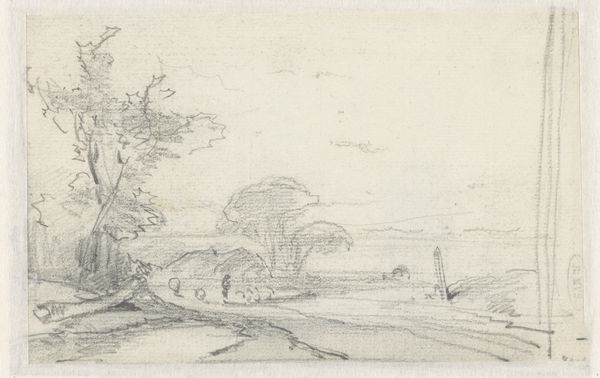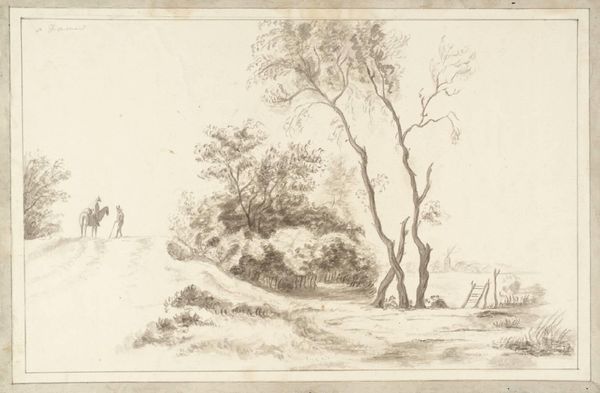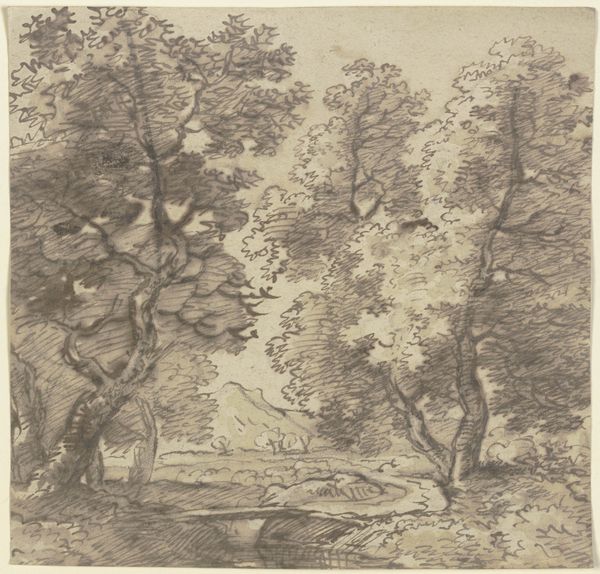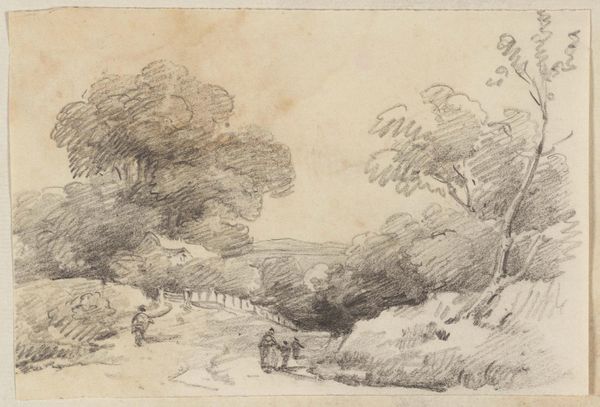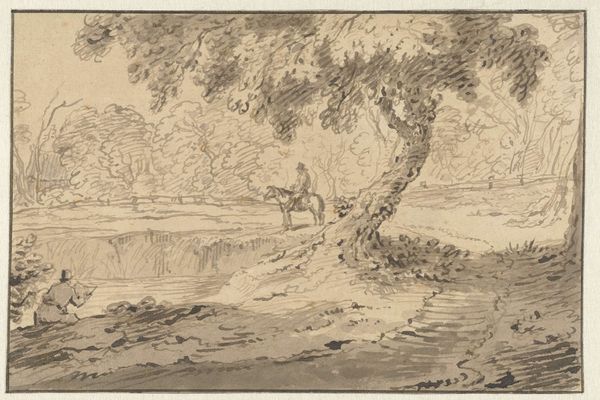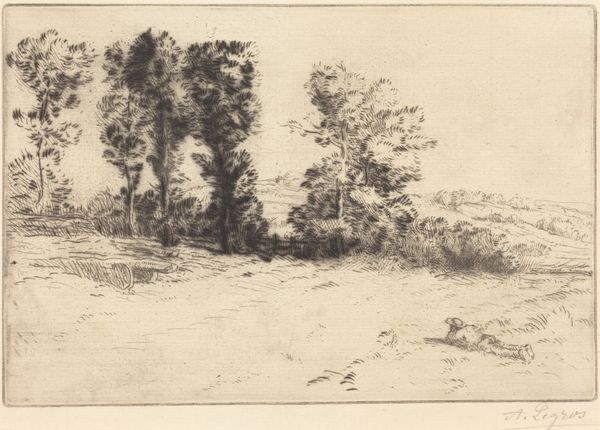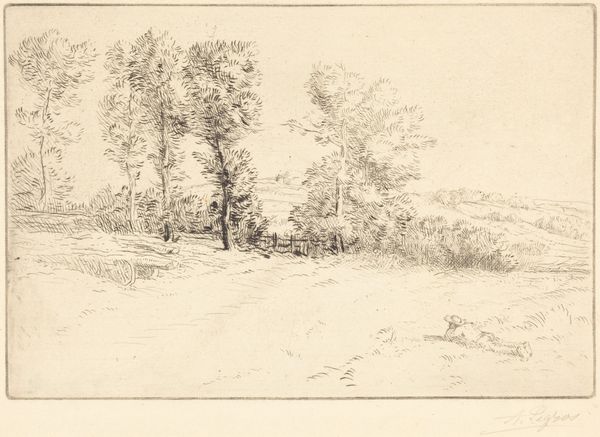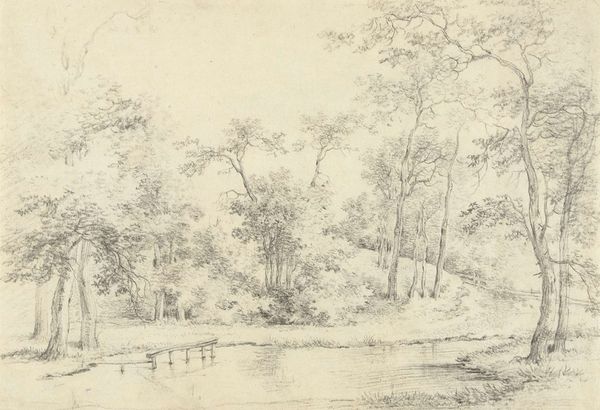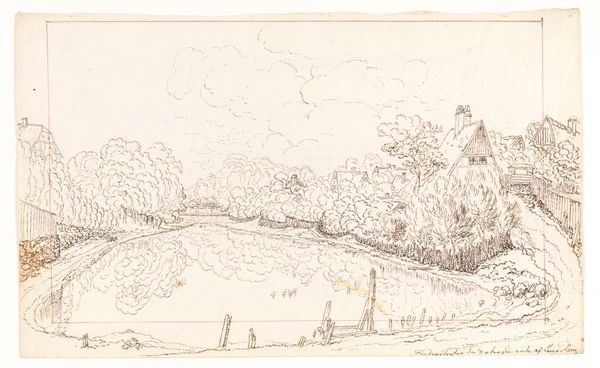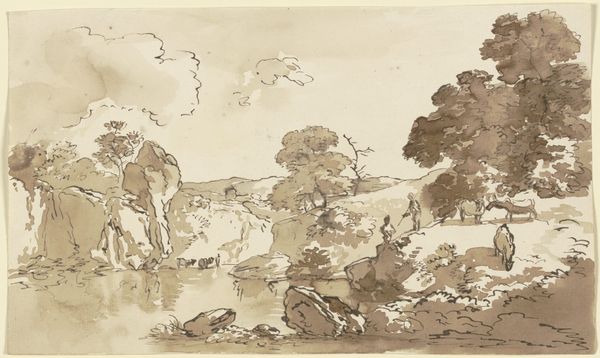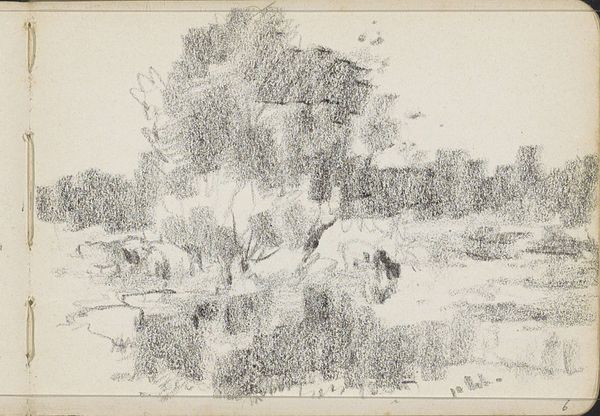
Gezicht op de 's-Gravenweg tussen Nieuwerkerk aan den IJssel en Kralingen 1868
0:00
0:00
#
toned paper
#
light pencil work
#
ink painting
#
pencil sketch
#
incomplete sketchy
#
etching
#
road
#
ink drawing experimentation
#
pen-ink sketch
#
watercolour illustration
#
watercolor
Copyright: Rijks Museum: Open Domain
Curator: Johannes Tavenraat's "Gezicht op de 's-Gravenweg tussen Nieuwerkerk aan den IJssel en Kralingen," created in 1868, offers a glimpse into the Dutch landscape. It's currently held at the Rijksmuseum. Editor: It has this hazy, almost dreamlike quality. You can see it's largely rendered in pencil, with a kind of soft focus that almost makes the trees look like clouds. I'm curious about the paper itself; there's a definite texture coming through. Curator: The toned paper is crucial to the overall effect, I think. It avoids stark contrasts and establishes a middle ground that emphasizes atmosphere. Tavenraat was working at a time of significant urbanization in the Netherlands; how does this idyllic scene sit within that context, I wonder? Editor: Good point. To me, the sketchy, unfinished quality really emphasizes the rapid capture of a moment. The use of a softer pencil, maybe even graphite, combined with what looks like minimal layering, indicates an emphasis on efficient mark-making. It's as though the act of observation itself is highlighted. You know, maybe as urban centers boomed, he highlighted a life in contrast to it? Curator: The placement of the figures - seemingly rural folk perhaps herding animals- in the composition indeed anchors it to the earth, drawing attention to their place and mode of work. Note also, this is no sublime wilderness. It is cultivated. A road, for a start. This tells us something about land use, movement of people and material. The trees on either side are positioned deliberately almost like portal, funneling you in. Editor: Right, I get that now. It's not simply a raw, untamed view; the road implies intervention. It really comes through in the ground itself; you get a feel for that grit simply from the layered pencil strokes. Curator: So, instead of just documenting, he is mediating a vision of the Dutch landscape undergoing immense transition. We are positioned perhaps at a crossing or at least some sort of pivotal point that makes us see both its potential and loss, something which must have resonated strongly at the time. Editor: Yes! You've contextualized that so nicely. It felt simply observational to start, but considering the shifts happening then it appears as if a deeper, subtle reflection is going on with each pencil stroke.
Comments
No comments
Be the first to comment and join the conversation on the ultimate creative platform.

